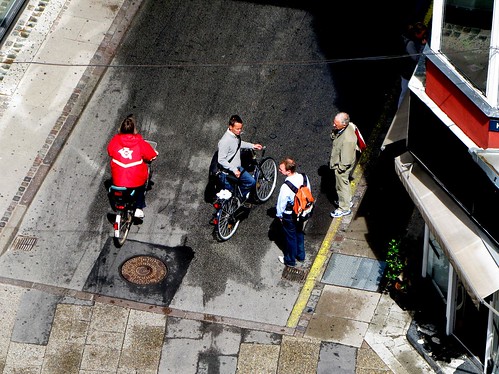
 There’s a lot of noise being made up to the Climate Conference in Copenhagen. Too much? Perhaps. But a series of six reports were published in The Lancet medical journal today that are worth tuning in to. They are all about the health dividend of combatting climate change. One of them is about transport and is rather kind to cycling and pedestrianism.Dr. Margaret Chan, director general of the World Health Organization [WHO] issued a press release today saying, in no uncertain terms, that pedestrians and cyclists should be made ‘kings of the urban jungle’ in the quest for benefits of mass active travel and urban mobility.The report suggests that funds be redirected away from roads in order to make walking and cycling “the most direct, convenient and pleasant options for most urban trips”. Pedestrians and cyclists should also benefit from having a “priority” over cars and trucks at intersections.Public health researchers and leaders issued the reports in a bid to get the message across to world leaders and negotiators heading for Copenhagen.
There’s a lot of noise being made up to the Climate Conference in Copenhagen. Too much? Perhaps. But a series of six reports were published in The Lancet medical journal today that are worth tuning in to. They are all about the health dividend of combatting climate change. One of them is about transport and is rather kind to cycling and pedestrianism.Dr. Margaret Chan, director general of the World Health Organization [WHO] issued a press release today saying, in no uncertain terms, that pedestrians and cyclists should be made ‘kings of the urban jungle’ in the quest for benefits of mass active travel and urban mobility.The report suggests that funds be redirected away from roads in order to make walking and cycling “the most direct, convenient and pleasant options for most urban trips”. Pedestrians and cyclists should also benefit from having a “priority” over cars and trucks at intersections.Public health researchers and leaders issued the reports in a bid to get the message across to world leaders and negotiators heading for Copenhagen.
"Sadly, policy-makers have been slow to recognize that the real bottom line of climate change is its risk to human health and quality of life," Dr. Margaret Chan, director general of the World Health Organization, says in a commentary with the studies.
"The issue now is not whether climate change is occurring, but how we can respond most effectively," says Chan.
The up-side, say Chan and the researchers, is that some carbon-reduction strategies could result in major health improvements.The urban transportation study says encouraging more walking and cycling would have big benefits for both health and the climate. It compared different transportation scenarios for London and Delhi. Walking and cycling came out on top even when compared to increased use of low-emission vehicles that are widely sold as "green" solutions."Important health gains and reductions in CO2 emissions can be achieved through replacement of urban trips in private motor vehicles with active travel in high-income and middle-income countries,” the researchers conclude.
They suggest policy-makers divert investment away from roads and toward provision of infrastructure for pedestrians and cyclists. They suggest motor vehicles be slowed down and more strictly controlled, while pedestrians and cyclists should have direct routes with priority at intersections, to "increase in the safety, convenience, and comfort of walking and cycling."
This is our kind of rhetoric. This is talk of looking at the bull and building necessary infrastructure for cyclists, increasing the mobility of cyclists and pedestrians alike and creating more liveable cities.We know the health benefits well here in Copenhagen. For every kilometre cycled the state puts 25 cents in society's pocket. For every kilometre driven by car and we pay out 16 cents. Net loss for society.It's quite brilliant to see urban cycling and separated infrastructure get such high profile backing from the WHO.Here's the link to The Lancet.
Here's an article about it on the BBC.
Thanks to Christopher for the link.




